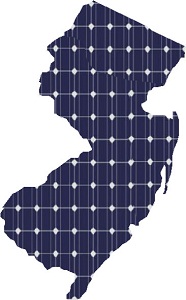N.J. hits record for solar installation as changes loom
 Sprinters, marathoners and NASCAR drivers all know: When you’re in the lead, don’t let up. That’s the philosophy New Jersey seems to be adopting in the race to build solar installations, even though sustainability and energy self-reliance aren’t as shiny and exciting as a medal for first place—or second place, which is where the state sits in U.S. rankings for solar power production.
Sprinters, marathoners and NASCAR drivers all know: When you’re in the lead, don’t let up. That’s the philosophy New Jersey seems to be adopting in the race to build solar installations, even though sustainability and energy self-reliance aren’t as shiny and exciting as a medal for first place—or second place, which is where the state sits in U.S. rankings for solar power production.
But it may not stay there long if it has more months like June.
New Jersey set a U.S. record for solar installations and solar power produced last month, completing 520 solar projects with more than 40-MW capacity, reported NJ.com.
New Jersey stands behind California but ahead of sunlight-rich, large states like New Mexico, Arizona, Texas, Colorado and Nevada.
The state won its place with smart policy, said Michele Siekerka, assistant commissioner for economic growth and green energy with New Jersey’s Department of Environmental Protection.
“We put the right policies in place, and the right mechanisms, to help to jump start the industry,” she said. “And the industry’s taken advantage of that.”
New Jersey has built its solar network mostly through rooftop installations rather than large-scale solar projects with dedicated land. That could change under a new plan from Gov. Chris Christie that emphasizes large-scale projects.
Siekerka said that the draft of the plan moves the state’s focus to larger projects.
“Those might be larger rooftop projects on commercial and industrial buildings, but we’re also planning projects on landfills and brownfields,” she said.
Brownfields, sites that include contamination, would need cleanup before panels could be installed. A state website confirmed that landfills and brownfields are possible sites for solar.
In the past, Christie has suggested larger solar farms would benefit more people than single-home or single-business installations. Siekerka agreed, saying New Jersey aimed for more drastic measures than panels on the roofs of houses.
“Those types of projects will bring beneficial gains to the entire state because they’ll be taking larger users off the grid,” she said. “It’s part of the strategy of diversifying our portfolio and moving toward clean energy to offset fossil fuels.”
The draft of the Energy Master Plan calls for the state to generate 22.5 percent of its energy from renewable sources like solar—down from the previous plan, set forth by former Gov. Jon Corzine, which aimed to generate 30 percent of the state’s power from renewable sources. Siekerka said the state expects to generate 2 percent of its power from solar by the end of the master plan, in 2021.



